Notes
Chapter 3: The World of Simple Programs
Section 2: More Cellular Automata https://www.wolframscience.com/nks/chap-3--the-world-of-simple-programs--notes#sect-3-2--more-cellular-automata
https://www.wolframscience.com/nks/chap-3--the-world-of-simple-programs--notes#sect-3-2--more-cellular-automata
Rule equivalences [for cellular automata]
Special [cellular automaton] rules
Rule expressions [for cellular automata]
Rule orderings [for cellular automata]
Algebraic forms [for cellular automaton rules]
Algebraic forms [for cellular automaton rules]
[Cellular automata with] two-cell neighborhoods
Numbers of [cellular automaton] rules
Implementation of general cellular automata
Implementation of totalistic cellular automata
Common framework [for cellular automaton rules]
Mod 3 [cellular automaton] rule
Section 3: Mobile Automata https://www.wolframscience.com/nks/chap-3--the-world-of-simple-programs--notes#sect-3-3--mobile-automata
https://www.wolframscience.com/nks/chap-3--the-world-of-simple-programs--notes#sect-3-3--mobile-automata
Implementation [of mobile automata]
Compressed evolution [of mobile automata]
Distribution of behavior [in mobile automata]
Section 4: Turing Machines https://www.wolframscience.com/nks/chap-3--the-world-of-simple-programs--notes#sect-3-4--turing-machines
https://www.wolframscience.com/nks/chap-3--the-world-of-simple-programs--notes#sect-3-4--turing-machines
Implementation [of Turing machines]
Number of [Turing machine] rules
Numbering scheme [for Turing machines]
Distribution of behavior [in Turing machines]
Head motion [in Turing machines]
Section 5: Substitution Systems https://www.wolframscience.com/nks/chap-3--the-world-of-simple-programs--notes#sect-3-5--substitution-systems
https://www.wolframscience.com/nks/chap-3--the-world-of-simple-programs--notes#sect-3-5--substitution-systems
Implementation [of substitution systems]
Properties [of substitution systems]
Growth rates [in substitution systems]
Generalized Fibonacci sequences
Connections [of substitution systems] with digit sequences
Connections [of substitution systems] with square roots
Spectra of substitution systems
Representation [of substitution systems] by paths
2D representations [of substitution systems]
Section 6: Sequential Substitution Systems https://www.wolframscience.com/nks/chap-3--the-world-of-simple-programs--notes#sect-3-6--sequential-substitution-systems
https://www.wolframscience.com/nks/chap-3--the-world-of-simple-programs--notes#sect-3-6--sequential-substitution-systems
Implementation [of sequential substitution systems]
Capabilities [of sequential substitution systems]
Section 7: Tag Systems https://www.wolframscience.com/nks/chap-3--the-world-of-simple-programs--notes#sect-3-7--tag-systems
https://www.wolframscience.com/nks/chap-3--the-world-of-simple-programs--notes#sect-3-7--tag-systems
Section 8: Cyclic Tag Systems https://www.wolframscience.com/nks/chap-3--the-world-of-simple-programs--notes#sect-3-8--cyclic-tag-systems
https://www.wolframscience.com/nks/chap-3--the-world-of-simple-programs--notes#sect-3-8--cyclic-tag-systems
Implementation [of cyclic tag systems]
Generalizations [of cyclic tag systems]
Mechanical implementation [of cyclic tag systems]
Section 9: Register Machines https://www.wolframscience.com/nks/chap-3--the-world-of-simple-programs--notes#sect-3-9--register-machines
https://www.wolframscience.com/nks/chap-3--the-world-of-simple-programs--notes#sect-3-9--register-machines
Implementation [of register machines]
Halting [of register machines]
Extended instruction sets [for register machines]
Section 10: Symbolic Systems https://www.wolframscience.com/nks/chap-3--the-world-of-simple-programs--notes#sect-3-10--symbolic-systems
https://www.wolframscience.com/nks/chap-3--the-world-of-simple-programs--notes#sect-3-10--symbolic-systems
Implementation [of symbolic systems]
Representations [for symbolic expressions]
[Enumerating] possible expressions
Properties [of example symbolic system]
Other [symbolic systems] rules
Long halting times [in symbolic systems]
Trees [representation for symbolic systems]
![[History of] numbering scheme [History of] numbering scheme](/nks/img/thumbnails/notes-3-2--history-of-numbering-scheme--textonly.png)
![Rule equivalences [for cellular automata] Rule equivalences [for cellular automata]](/nks/img/thumbnails/notes-3-2--rule-equivalences-for-cellular-automata--textonly.png)
![Special [cellular automaton] rules Special [cellular automaton] rules](/nks/img/thumbnails/notes-3-2--special-cellular-automaton-rules--textonly.png)
![Rule expressions [for cellular automata] Rule expressions [for cellular automata]](/nks/img/thumbnails/notes-3-2--rule-expressions-for-cellular-automata--textonly.png)
![Rule orderings [for cellular automata] Rule orderings [for cellular automata]](/nks/img/thumbnails/notes-3-2--rule-orderings-for-cellular-automata--textonly.png)
![Algebraic forms [for cellular automaton rules] Algebraic forms [for cellular automaton rules]](/nks/img/thumbnails/notes-3-2--algebraic-forms-for-cellular-automaton-rules-1--textonly.png)
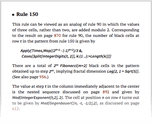
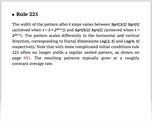
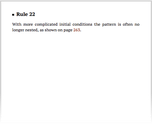
![Algebraic forms [for cellular automaton rules] Algebraic forms [for cellular automaton rules]](/nks/img/thumbnails/notes-3-2--algebraic-forms-for-cellular-automaton-rules-2--textonly.png)
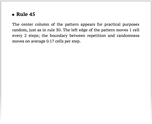
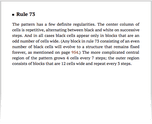
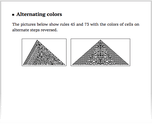
![[Cellular automata with] two-cell neighborhoods [Cellular automata with] two-cell neighborhoods](/nks/img/thumbnails/notes-3-2--cellular-automata-with-two-cell-neighborhoods--textonly.png)
![Numbers of [cellular automaton] rules Numbers of [cellular automaton] rules](/nks/img/thumbnails/notes-3-2--numbers-of-cellular-automaton-rules--textonly.png)
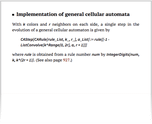
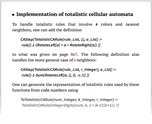
![Common framework [for cellular automaton rules] Common framework [for cellular automaton rules]](/nks/img/thumbnails/notes-3-2--common-framework-for-cellular-automaton-rules--textonly.png)
![Mod 3 [cellular automaton] rule Mod 3 [cellular automaton] rule](/nks/img/thumbnails/notes-3-2--mod-3-cellular-automaton-rule--textonly.png)
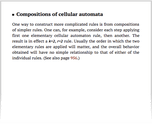
![[Cellular automaton] rules based on algebraic systems [Cellular automaton] rules based on algebraic systems](/nks/img/thumbnails/notes-3-2--cellular-automaton-rules-based-on-algebraic-systems--textonly.png)
![Implementation [of mobile automata] Implementation [of mobile automata]](/nks/img/thumbnails/notes-3-3--implementation-of-mobile-automata--textonly.png)
![Compressed evolution [of mobile automata] Compressed evolution [of mobile automata]](/nks/img/thumbnails/notes-3-3--compressed-evolution-of-mobile-automata--textonly.png)
![Distribution of behavior [in mobile automata] Distribution of behavior [in mobile automata]](/nks/img/thumbnails/notes-3-3--distribution-of-behavior-in-mobile-automata--textonly.png)
![Active cell motion [in mobile automata] Active cell motion [in mobile automata]](/nks/img/thumbnails/notes-3-3--active-cell-motion-in-mobile-automata--textonly.png)
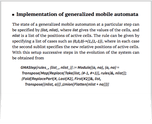
![Implementation [of Turing machines] Implementation [of Turing machines]](/nks/img/thumbnails/notes-3-4--implementation-of-turing-machines--textonly.png)
![Number of [Turing machine] rules Number of [Turing machine] rules](/nks/img/thumbnails/notes-3-4--number-of-turing-machine-rules--textonly.png)
![Numbering scheme [for Turing machines] Numbering scheme [for Turing machines]](/nks/img/thumbnails/notes-3-4--numbering-scheme-for-turing-machines--textonly.png)
![Counter [Turing] machine Counter [Turing] machine](/nks/img/thumbnails/notes-3-4--counter-turing-machine--textonly.png)
![Distribution of behavior [in Turing machines] Distribution of behavior [in Turing machines]](/nks/img/thumbnails/notes-3-4--distribution-of-behavior-in-turing-machines--textonly.png)
![Head motion [in Turing machines] Head motion [in Turing machines]](/nks/img/thumbnails/notes-3-4--head-motion-in-turing-machines--textonly.png)
![Localized structures [in Turing machines] Localized structures [in Turing machines]](/nks/img/thumbnails/notes-3-4--localized-structures-in-turing-machines--textonly.png)
![History [of Turing machines] History [of Turing machines]](/nks/img/thumbnails/notes-3-4--history-of-turing-machines--textonly.png)
![Implementation [of substitution systems] Implementation [of substitution systems]](/nks/img/thumbnails/notes-3-5--implementation-of-substitution-systems--textonly.png)
![Properties [of substitution systems] Properties [of substitution systems]](/nks/img/thumbnails/notes-3-5--properties-of-substitution-systems--textonly.png)
![Growth rates [in substitution systems] Growth rates [in substitution systems]](/nks/img/thumbnails/notes-3-5--growth-rates-in-substitution-systems--textonly.png)
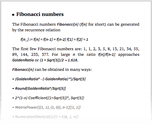
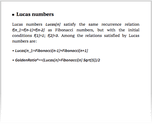
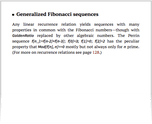
![Connections [of substitution systems] with digit sequences Connections [of substitution systems] with digit sequences](/nks/img/thumbnails/notes-3-5--connections-of-substitution-systems-with-digit-sequences--textonly.png)
![Connections [of substitution systems] with square roots Connections [of substitution systems] with square roots](/nks/img/thumbnails/notes-3-5--connections-of-substitution-systems-with-square-roots--textonly.png)
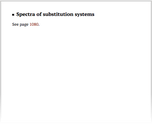
![Representation [of substitution systems] by paths Representation [of substitution systems] by paths](/nks/img/thumbnails/notes-3-5--representation-of-substitution-systems-by-paths--textonly.png)
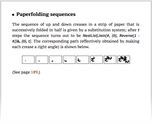
![2D representations [of substitution systems] 2D representations [of substitution systems]](/nks/img/thumbnails/notes-3-5--2d-representations-of-substitution-systems--textonly.png)
![Other examples [of substitution systems] Other examples [of substitution systems]](/nks/img/thumbnails/notes-3-5--other-examples-of-substitution-systems--textonly.png)
![History [of substitution systems] History [of substitution systems]](/nks/img/thumbnails/notes-3-5--history-of-substitution-systems--textonly.png)
![Implementation [of sequential substitution systems] Implementation [of sequential substitution systems]](/nks/img/thumbnails/notes-3-6--implementation-of-sequential-substitution-systems--textonly.png)
![Capabilities [of sequential substitution systems] Capabilities [of sequential substitution systems]](/nks/img/thumbnails/notes-3-6--capabilities-of-sequential-substitution-systems--textonly.png)
![Order of replacements [in sequential substitution systems] Order of replacements [in sequential substitution systems]](/nks/img/thumbnails/notes-3-6--order-of-replacements-in-sequential-substitution-systems--textonly.png)
![History [of sequential substitution systems] History [of sequential substitution systems]](/nks/img/thumbnails/notes-3-6--history-of-sequential-substitution-systems--textonly.png)
![Implementation [of tag systems] Implementation [of tag systems]](/nks/img/thumbnails/notes-3-7--implementation-of-tag-systems--textonly.png)
![Randomness [in tag systems] Randomness [in tag systems]](/nks/img/thumbnails/notes-3-7--randomness-in-tag-systems--textonly.png)
![History [of tag systems] History [of tag systems]](/nks/img/thumbnails/notes-3-7--history-of-tag-systems--textonly.png)
![Implementation [of cyclic tag systems] Implementation [of cyclic tag systems]](/nks/img/thumbnails/notes-3-8--implementation-of-cyclic-tag-systems--textonly.png)
![Generalizations [of cyclic tag systems] Generalizations [of cyclic tag systems]](/nks/img/thumbnails/notes-3-8--generalizations-of-cyclic-tag-systems--textonly.png)
![Mechanical implementation [of cyclic tag systems] Mechanical implementation [of cyclic tag systems]](/nks/img/thumbnails/notes-3-8--mechanical-implementation-of-cyclic-tag-systems--textonly.png)
![Properties [of cyclic tag systems] Properties [of cyclic tag systems]](/nks/img/thumbnails/notes-3-8--properties-of-cyclic-tag-systems--textonly.png)
![History [of cyclic tag systems] History [of cyclic tag systems]](/nks/img/thumbnails/notes-3-8--history-of-cyclic-tag-systems--textonly.png)
![Implementation [of register machines] Implementation [of register machines]](/nks/img/thumbnails/notes-3-9--implementation-of-register-machines--textonly.png)
![Halting [of register machines] Halting [of register machines]](/nks/img/thumbnails/notes-3-9--halting-of-register-machines--textonly.png)
![Extended instruction sets [for register machines] Extended instruction sets [for register machines]](/nks/img/thumbnails/notes-3-9--extended-instruction-sets-for-register-machines--textonly.png)
![History [of register machines] History [of register machines]](/nks/img/thumbnails/notes-3-9--history-of-register-machines--textonly.png)

![Implementation [of symbolic systems] Implementation [of symbolic systems]](/nks/img/thumbnails/notes-3-10--implementation-of-symbolic-systems--textonly.png)
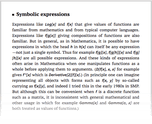
![Representations [for symbolic expressions] Representations [for symbolic expressions]](/nks/img/thumbnails/notes-3-10--representations-for-symbolic-expressions--textonly.png)
![[Enumerating] possible expressions [Enumerating] possible expressions](/nks/img/thumbnails/notes-3-10--enumerating-possible-expressions--textonly.png)
![Properties [of example symbolic system] Properties [of example symbolic system]](/nks/img/thumbnails/notes-3-10--properties-of-example-symbolic-system--textonly.png)
![Other [symbolic systems] rules Other [symbolic systems] rules](/nks/img/thumbnails/notes-3-10--other-symbolic-systems-rules--textonly.png)
![Long halting times [in symbolic systems] Long halting times [in symbolic systems]](/nks/img/thumbnails/notes-3-10--long-halting-times-in-symbolic-systems--textonly.png)
![Trees [representation for symbolic systems] Trees [representation for symbolic systems]](/nks/img/thumbnails/notes-3-10--trees-representation-for-symbolic-systems--textonly.png)
![Order dependence [in symbolic systems] Order dependence [in symbolic systems]](/nks/img/thumbnails/notes-3-10--order-dependence-in-symbolic-systems--textonly.png)
![History [of symbolic systems] History [of symbolic systems]](/nks/img/thumbnails/notes-3-10--history-of-symbolic-systems--textonly.png)
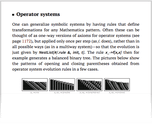
![Network analogs [of symbolic systems] Network analogs [of symbolic systems]](/nks/img/thumbnails/notes-3-10--network-analogs-of-symbolic-systems--textonly.png)
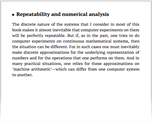
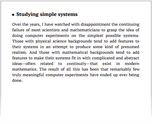
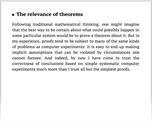
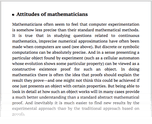
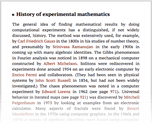
![Practicalities [of computer experiments] Practicalities [of computer experiments]](/nks/img/thumbnails/notes-3-12--practicalities-of-computer-experiments--textonly.png)